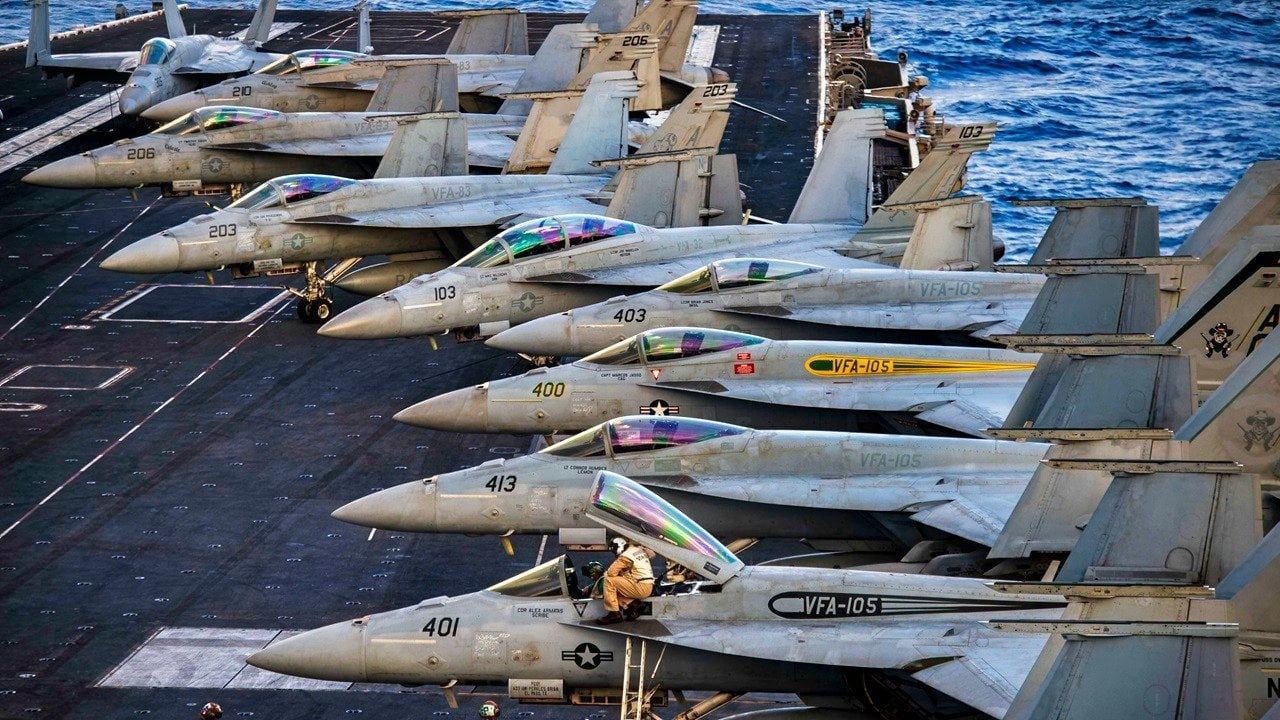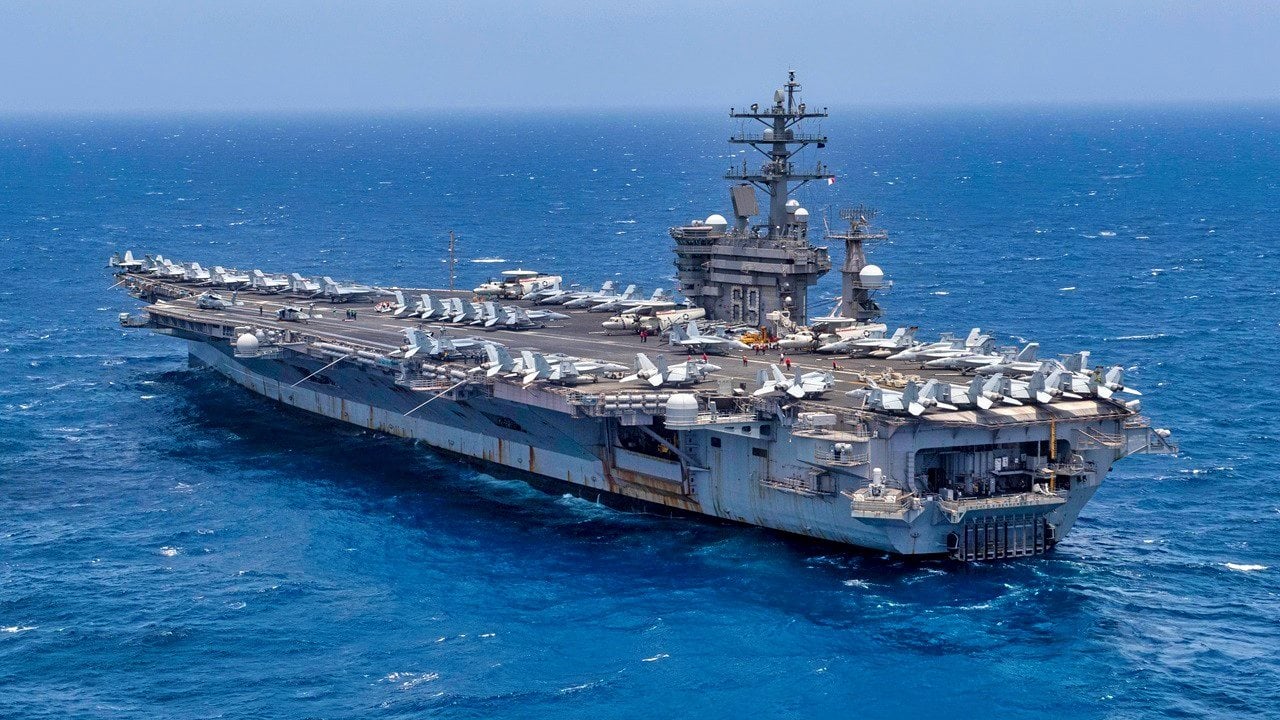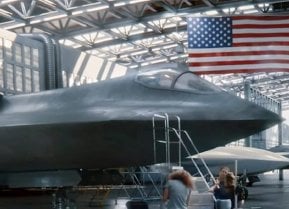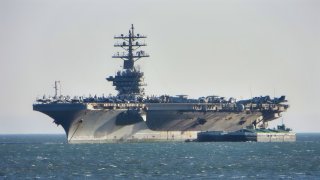The Navy Aircraft Carrier Fighting the Houthis Is Finally Headed Home
The USS Dwight D. Eisenhower (CVN-69) is returning from an extended deployment in the Middle East following Israel's response to the October 7, 2023, terrorist attack.
Summary: The USS Dwight D. Eisenhower (CVN-69) is returning from an extended deployment in the Middle East following Israel's response to the October 7, 2023, terrorist attack.

-The Carrier Strike Group (CSG) protected commercial shipping in the Red Sea and rescued mariners from Houthi attacks.
-The USS Theodore Roosevelt (CVN-71) will replace Eisenhower in the region, continuing the U.S. Navy's tradition of global power projection.
-This deployment underscores the Navy’s commitment to regional stability and maritime security.
USS Theodore Roosevelt Heads to Middle East for Critical Deployment
The United States Navy's second oldest nuclear-powered aircraft carrier and her crew have earned some rest – the USS Dwight D. Eisenhower (CVN-69) was deployed to the Middle East last fall after Israel invaded Gaza in response to the terrorist attack on a music festival and settlements in southern Israel on October 7, 2023. In response, the Israeli military launched a full-scale invasion of the Palestinian-controlled Gaza Strip.
CVN-69 has spent much of her extended deployment in the Red Sea, protecting commercial shipping that has come under attack from the Iranian-back Houthi rebels in Yemen, which began in support of Hamas (which is also backed by Tehran).
"Flying over 30,000 hours and sailing over 55,000 miles the IKE CSG demonstrated our commitment to regional stability and protected freedom of navigation throughout the Red Sea and Gulf of Aden," the United States Central Command (CENTCOM) announced via X, the social media platform formerly known as Twitter, on Saturday in reference to the Nimitz-class supercarrier and carrier strike group (CSG).
"The IKE CSG also upheld their commitment to safety of all seafarers, rescuing mariners in distress on several occasions following unprovoked attacks on innocent mariners by Iranian-backed Houthis," CENTCOM further noted.
The departure of the U.S. Navy CSG was announced just days after a Liberian-flagged but Greek-owned-and-operated freighter named the Tutor was sunk in a Houthi missile strike, The Associated Press reported. One mariner was killed.
Forget the Big Stick – The U.S. Navy Has Nuclear-powered Carriers!
The U.S. Navy isn't leaving the region unprotected, as it was also announced USS Theodore Roosevelt (CVN-71) and her carrier strike group will soon enter CENTCOM's "Area of Responsibility," where she will serve in a similar capacity.
President Theodore Roosevelt, for whom the warship is named, was famous for his U.S. foreign policy, which he said was to "speak softly and carry a big stick."
CVN-71 is far more than just a big stick. She is one of the U.S. Navy's 10 Nimitz-class supercarriers that are able to project power around the globe. No other nation in the world has the capability to so readily ensure that multiple regions are protected by aircraft carriers that can operate for months at a time.
Yet, this is still far from a routine deployment, as USNI reported, noting that the last time a Pacific carrier deployed to the Middle East was in 2021 – when the then Japan-based USS Ronald Reagan (CVN-76) was sent to the North Arabian Sea to provide air support during the U.S. withdrawal of Afghanistan.

The U.S. Navy has maintained a near-constant rotation of carriers to the CENTCOM Area of Responsibility. That has included USS Harry S. Truman (CVN-75) which was deployed to the Mediterranean in February 2022 following Russia's unprovoked invasion of Ukraine; followed by USS George W. Bush (CVN-77), while USS Gerald R. Ford (CVN-78), the lead vessel of the Navy's newest class of nuclear-powered supercarriers, saw her deployment extended last fall in response to the Israel-Hamas War.
Author Experience and Expertise: Peter Suciu
Peter Suciu is a Michigan-based writer. He has contributed to more than four dozen magazines, newspapers, and websites with over 3,200 published pieces over a twenty-year career in journalism. He regularly writes about military hardware, firearms history, cybersecurity, politics, and international affairs. Peter is also a Contributing Writer for Forbes and Clearance Jobs. You can follow him on Twitter: @PeterSuciu. You can email the author: [email protected].
From the Vault
Russia Freaked Out: Why the U.S. Navy 'Unretired' the Iowa-Class Battleships
Battleship vs. Battlecruiser: Iowa-Class vs. Russia's Kirov-Class (Who Wins?)


